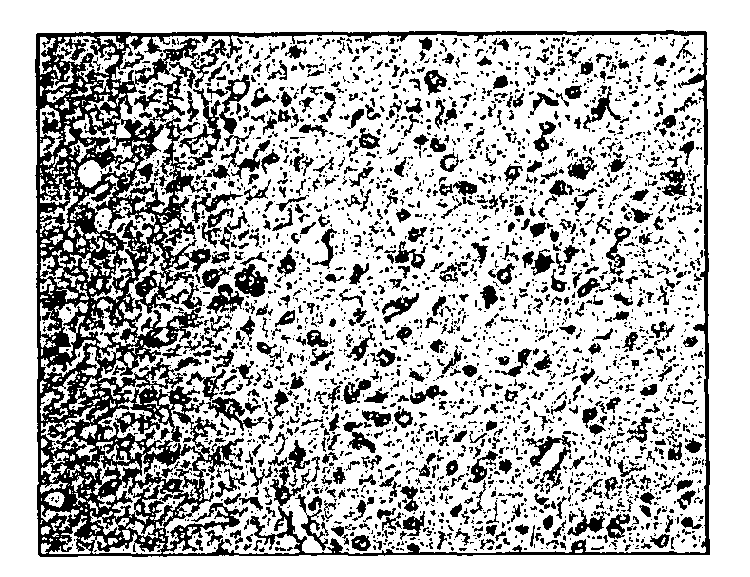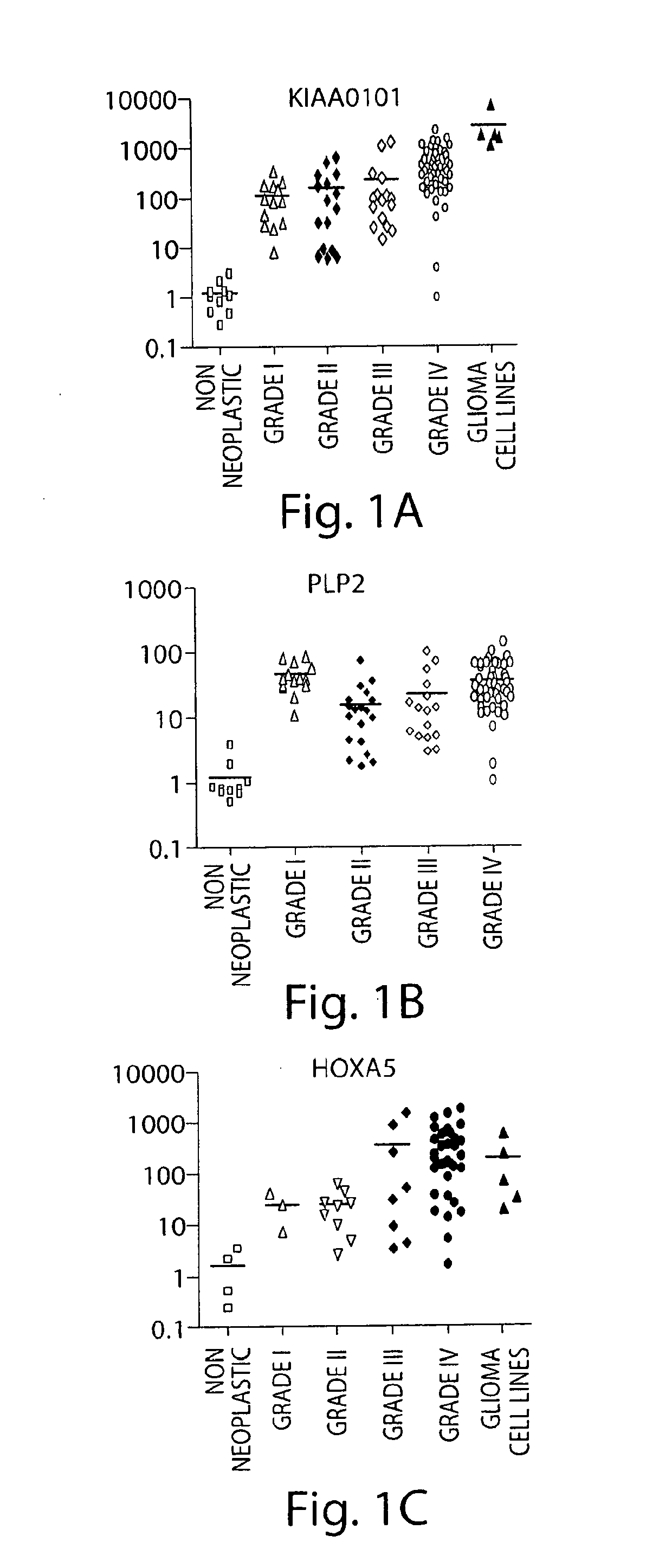Methods for diagnosing and treating astrocytomas
a technology for astrocytoma and astrocytoma, applied in the field of methods for diagnosing and treating astrocytoma, can solve the problems of distress, no effective treatment, general non-curable resection, etc., and achieve the effect of reducing the activity or function of the polypeptid
- Summary
- Abstract
- Description
- Claims
- Application Information
AI Technical Summary
Benefits of technology
Problems solved by technology
Method used
Image
Examples
example 1
Identification of Astrocytoma Markers
Materials and Methods
Tissue Samples
[0227]Tumor specimens were obtained from patients with CNS tumors treated by the Neurosurgery Group of the Department of Neurology at Hospital das Clinicas, School of Medicine, University of São Paulo, São Paulo, Brazil, between 2000 and 2005. The tissues were categorized according to the WHO grading system1, 2 by neuropathologists from the Division of Pathological Anatomy of the same institution. Informed consent was obtained from each patient. Fresh surgical samples of different grades and non-neoplastic tissues of the CNS (temporal lobectomy from epilepsy surgeries) were macrodissected and immediately snap-frozen in liquid nitrogen upon surgical removal. All tumor tissues were microdissected prior to RNA extraction as described previously11.
Tissue Samples for IHC
[0228]Tumor specimens were obtained during therapeutic surgical approach of patients with CNS tumors by the Neurosurgery Group of the Department of N...
example 2
Validation of Additional Astrocytoma Marker Gene Expression
[0319]Gliomas of astrocytic origin are the most common type of primary brain tumors in the nervous system. The use of oligonucleotide microarrays to compare the expression pattern of genes between grade IV (glioblastoma) and grade I (pilocytic astrocytoma) astrocytic tumors resulted in the identification of genes involved in the progression of the disease and possible novel therapeutic targets. In further experiments, the expression of additional genes in astrocytomas, glioma cell lines and non-neoplastic tissues was analyzed.
Quantitative Real Time RT-PCR (QT-PCR)
[0320]The relative expression levels of the listed genes were analyzed by QT-PCR to validate the microarray data. To this end, we used ten non-neoplastic brain tissues, and ninety astrocytic tumor samples: twelve GI (PA) (median age 22 years), thirteen low grade astrocytomas (median age 37 years), fifteen anaplastic astrocytomas (median age 31 years), and fifty thre...
example 3
Both MELK and PLP2 are Markers for the Recurrence of Glioblastoma
[0324]FIG. 11 shows that MELK and PLP2 are markers for invasiveness. Gene expression level in recurrence was measured by QT-PCR. The relative expression of PLP2 (A) and MELK (B) in sequential samples of nine patients who were submitted to two surgeries are shown. The first surgery was diagnostic and therapeutical (white) and the second intervention was because of recurrence of tumor (black). The expression level of each gene was compared to the gene expression in non-neoplastic brain samples. As shown in FIG. 11 MELK and PLP2 can be detected highly expressed in the second operation compared to the first, which implies that they are good invasiveness markers. This suggests that a physician operating for the first time could take samples to perform a QT-PCR to detect MELK and PLP2 levels from the tissue and compare it with non-neoplastic tissue. In the case that the levels are high, the physician could then decide to sub...
PUM
| Property | Measurement | Unit |
|---|---|---|
| molecular weight | aaaaa | aaaaa |
| thick | aaaaa | aaaaa |
| mean survival time | aaaaa | aaaaa |
Abstract
Description
Claims
Application Information
 Login to View More
Login to View More - R&D
- Intellectual Property
- Life Sciences
- Materials
- Tech Scout
- Unparalleled Data Quality
- Higher Quality Content
- 60% Fewer Hallucinations
Browse by: Latest US Patents, China's latest patents, Technical Efficacy Thesaurus, Application Domain, Technology Topic, Popular Technical Reports.
© 2025 PatSnap. All rights reserved.Legal|Privacy policy|Modern Slavery Act Transparency Statement|Sitemap|About US| Contact US: help@patsnap.com



